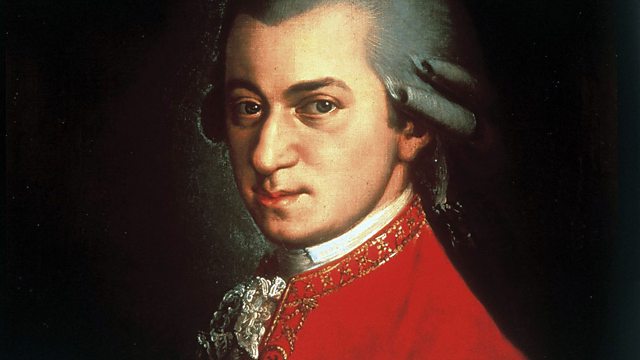
A Peaceful and Domesticated Existence
Donald Macleod explores the miraculous chamber music of Mozart's Vienna years. A sonata for a love-struck pupil, some serious serenading and Mozart gets married.
This week Donald Macleod explores the miraculous chamber music of Mozart's Vienna years. Today, a sonata for a love-struck pupil; some serious serenading; and Mozart gets married.
When Mozart found himself forcefully ejected from his position at the Salzburg court of Prince-Archbishop Hieronymus Colloredo, it was just what he wanted; he had become bored with the cosily comfortable but suffocating confines of life in livery and was itching to try his luck as a freelance composer and performer in the musical capital of the Austro-Hungarian Empire, Vienna. His first priority was making a living, and the fastest route to doing that was to take private pupils. One such was Josepha Auernhammer, a musically gifted but - at least in Mozart's eyes - personally unprepossessing young woman who quickly developed a crush on him. Her feelings were not returned, but Mozart did toss off a dashingly galant masterpiece to perform with her: his Sonata in D for two pianos, K 448. Much more serious in tone was his contribution to what was traditionally considered a somewhat light-weight genre; the Serenade in C minor for pairs of oboes, clarinets, horns and bassoons is more of a symphony for wind instruments than the usual brand of superior aristocratic background music. The month after he wrote that serenade, his persistent serenading of a young soprano, Constanze Weber, finally paid off when she became Constanze Mozart. As Mozart had explained in a letter to his father Leopold - who was not at all happy with the match - his disposition was "inclined to a peaceful and domesticated existence", and evidently Constanze was the key. She had, Mozart said, "no wit", but she made up for it with "enough common sense to enable her to fulfil her duties as a wife and mother". Praise indeed!
Rondo in A for string quartet, K 464a
Emerson Quartet
Sonata in D for two pianos, K 448
Murray Perahia, Radu Lupu, (pianos)
Serenade in C minor for 2 oboes, 2 clarinets, 2 horns and 2 bassoons ('Nacht Musik'), K 388
Orpheus Chamber Orchestra.
Last on
More episodes
Previous
You are at the first episode
Music Played
-
![]()
Wolfgang Amadeus Mozart
Quartet movement [fragment] In A major Ka.72 (K.464a)
Ensemble: Emerson String Quartet.- DG 483 0000.
- DG.
- 5.
-
![]()
Wolfgang Amadeus Mozart
Piano sonata in D major K.448
Performer: Murray Perahia. Performer: Radu Lupu.- SONY : SK 39511-.
- SONY.
- 1.
-
![]()
Wolfgang Amadeus Mozart
Wind Serenade in C minor K.388
Orchestra: Orpheus Chamber Orchestra.- DEUTSCHE GRAMMOP : DG 431-693-2.
- DEUTSCHE GRAMMOP.
- 6.
Broadcasts
- Mon 4 Sep 2017 12:00����ý Radio 3
- Mon 4 Sep 2017 18:30����ý Radio 3
Beethoven Unleashed – the box set
What was really wrong with Beethoven?
Composers A to Z
Who knew? Five eye-opening stories from Composer of the Week
Five reasons why we love Parry's Jerusalem
What is the strange power of Jerusalem which makes strong men weep?
A man out of time – why Parry's music and ideas were at odds with his image...
The composer of Jerusalem was very far from the conservative figure his image suggests.
Composer Help Page
Find resources and contacts for composers from within the classical music industry.





